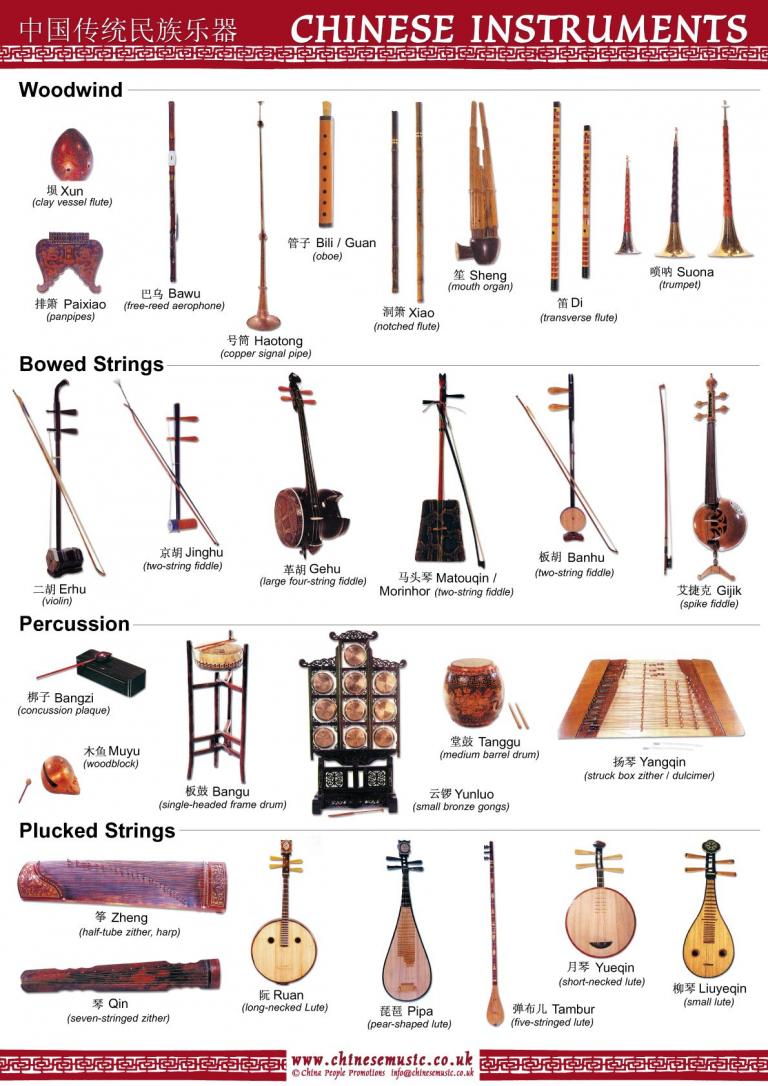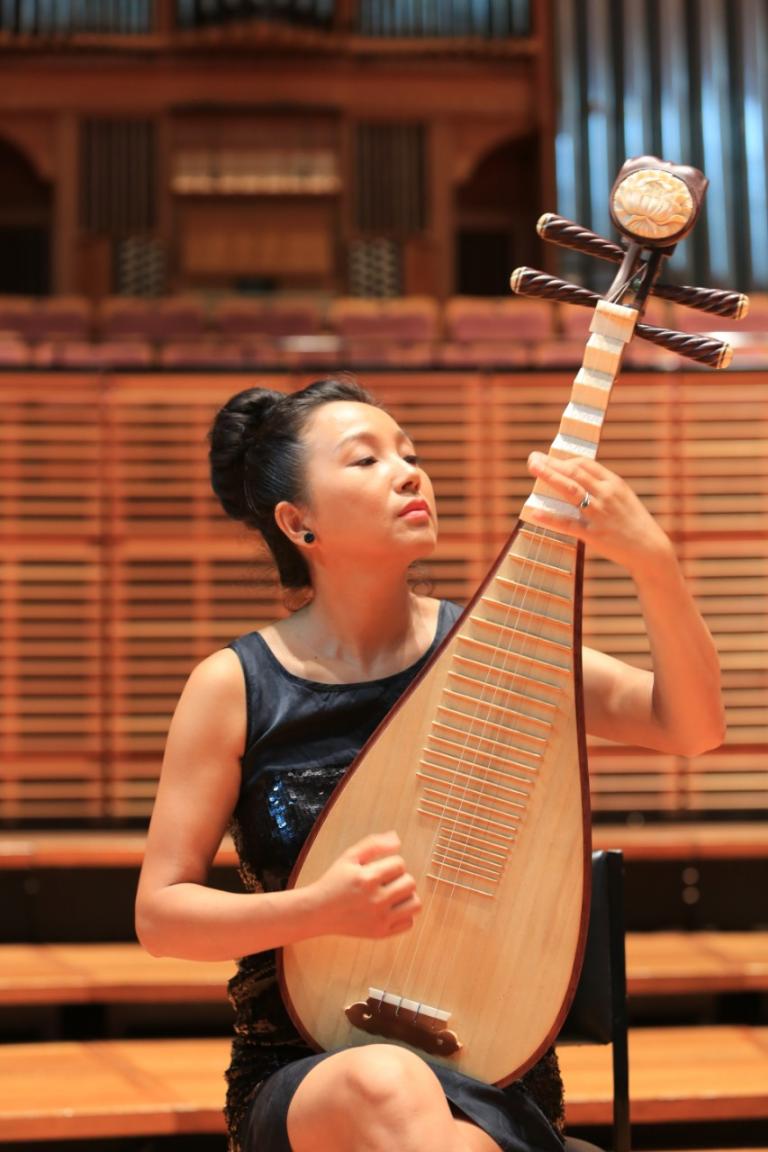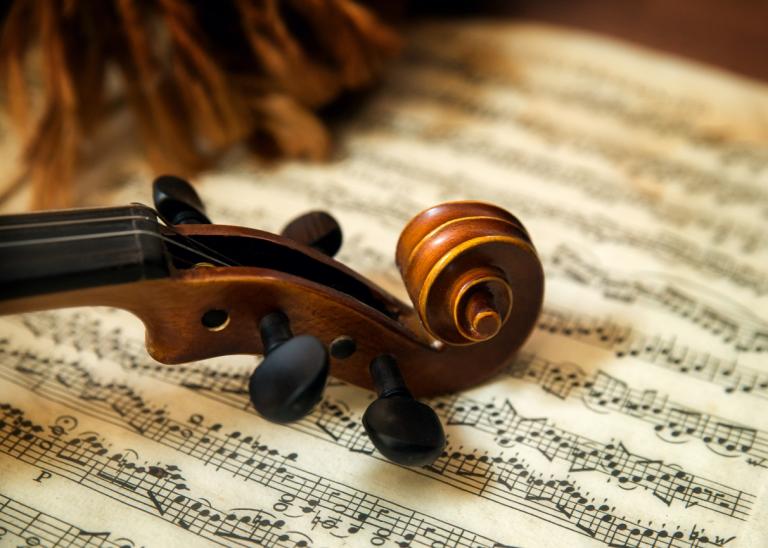Melodious Ancient Tunes
5 min readThere are “ten famous classical tunes”in China’s music development history: High Mountain and Running River, Spring Moonlight on the Flowers by the River, AutumnMoon over Han Palace, White Snow in Early Spring, Dialogue between the Fishermanand the Woodcutter, Eighteen Beats of a Nomad Flute, Guangling Tune, Plum Blossom Melody-Three Variations, Wild Geese on the Sandbank and Ambush from All Sides.
These titles alone can make people feel the flavor of these famous classical tunes. If listened to attentively, they can make people relaxed and happy or stir their souls.

High Mountain and Running River is a famous tune played by famous pre-Qin instrumentalist Boya. Boya was good at playing seven-stringed instruments and at the same time a composer reputed as “immortal instrumentalist”. Xunzi says,”When Boya played a stringed instrument, six horses looked up as they ate grass.”This shows his superb skill in playing instruments. It is said that Boya did not achieve success three years after he began to learn to play instruments. The teacher Cheng Lian took him to Penglai near the East China Sea to hear the sounds of surging waves and wailing birds.
He suddenly comprehended the essence of music from nature. Once, while playing an instrument in the wild, Boya met woodcutter Zhong Ziqi by chance. After hearing Boya’s resounding music, Zhong Ziqi said,”It is towering like a high mountain.”After the music changed, Zhong Ziqi said,”It is spectacular like flowing water.”Boya exclaimed,”Fine, your view is the same as mine.”After Zhong Ziqi died, Boya played High Mountain and Running River in front of his grave and said sadly,”My soul mate is not here. Whom should I play the instrument for?”Then he resolutely threw the instrument to the ground, and never played musical instruments again.
It is said that Eighteen Beats of a Nomad Flute was created by woman poet Cai Wenji(c.117-c.249). Her father was famous Eastern Han writer, calligrapher and musician Cai Yong. In the late Eastern Han Dynasty, Huns invaded the central plains, and Cai Wenji was captured in the escape, later became Prince Zuoxian’s concubine in the southern Hun area, and gave birth to two sons.12 years later, Cao Cao ransomed Cai Wenji with a lot of gold in consideration of his friendship with Cai Yong. After returning to the Han Dynasty, Cai Wenji felt sad about turmoil and separation, wrote long poem Eighteen Beats of a Nomad Flute, and set it to music. The nomad flute was a wind instrument popular in the region north of the Great Wall and the Western Regions then, producing sad sound.”Eighteen Beats”means eighteen segments.

Eighteen Beats of a Nomad Flute is very pathetic, touching, plaintive and sad, expressing her excruciating pain and making later people sigh with infinite emotion Guangling Tune is a grand instrumental tune. It emerged in the Han Dynasty at the latest. The most representative saying about its theme is: Guangling Tune evolved from Nie Zheng’s Assassination of the King of Han. In the Warring States Period,a sword forger forged a sword for the king of the Han State, and was killed by the king of the Han State for missing the deadline. His son Nie Zheng decided to avenge his father. He first entered secretly into the palace of the Han State with bricklayers to assassinate the king of the Han State but failed. Because the king of the Han State loved the sound of the ancient stringed instrument, he went to remote mountains and painstakingly learned to play the ancient stringed instrument. Ten years later, after acquiring superb skill in playing the ancient stringed instrument, he returned to the Han State in disguise, used an opportunity to play the ancient stringed instrument for the king of the Han State to assassinate the king of the Han State, and was also killed as a result. Because the original title of this tune might offend the emperor, it was renamed Avenging the Father. Because it was popular around Guangling(today’s Yangzhou, Jiangsu), it was also known as Guangling Tune, Death in Guangling, etc.
The most famous person to play this tune was Ji Kang (224-263),a celebrated scholar in the Wei and Jin dynasties. He was convicted for refusing to obey the ruler, asked for a musical instrument before execution, played this tune, and then sighed:”Guangling Tune is finished today!”
Plum Blossom Melody-Three Variations is a tune eulogizing plum blossoms.
Flowers and birds are an important theme of Chinese art. In painting, there is the special category of flower-bird paintings, and in music, there are also many works on the theme of flowers and birds. Plum Blossom Melody -Three Variations expressessentiments through portraying concrete objects, describes plum blossoms in full bloom emitting a strong scent against the wind in spite of the cold in a moonlit night, and thus eulogizes people of noble character. This tune has the structure of theme reoccurrence. The section theme is repeated thrice, and the overtone method is adopted for each repetition. Therefore, it is called “Three Variations”.
Some of “the ten famous classical tunes”are fascinating, some are thought-provoking, and some fill people with indignation. They are really classics in China’s music history. In the modern and contemporary times,a number of excellent musical works emerged-for example, The Moon Reflected on the Er-quan Spring is comparable to them.
The Moon Reflected on the Er-quan Spring is the representative work of folk erhu musician Hua Yanjun (also known as Abing,1893-1950). The whole tune is filled with a weather-beaten folk artist’s strong emotion, fully showing the unique charm of erhu art. The beginning of the tune is a prelude like a heavy and painful sigh. The composer described his sufferings in life with an overpowering emotion, revealing tenacity inhardships. He poured out the oppression he suffered in that era and the mental grief he could not eliminate. The fourth section is the climax of the tune. The composer’s extremely furious cries burst out from the depths of his soul. He not only struggledand fought against his miserable fate, but also aspired to and pursued good life. The high-spirited tune ends with notes crying out against injustice, making feel that it has not ended. The Moon Reflected on the Er-quan Spring has touched the souls of tens of millions of people with the deep, melodious and indignant tune. In 1978, world-famous conductor Seiji Ozawa visited Beijing and was invited to act as conductor in the Central Orchestra’s performance of the ensemble of stringed instruments The Moon Reflected on the Er-quan Spring. On the second day, he listened to the 17-year old girl student Jiang Jianhua’s erhu solo The Moon Reflected on the Er-quan Spring, was moved to tears, and muttered,”One should kneel down to listen to such music.. If I had heard this performance,I would not have dared to agree to act as conductor for this tune.”









